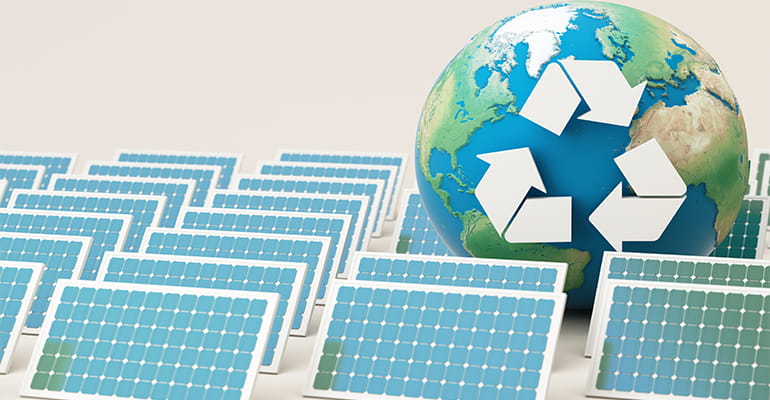
Solar energy has gained a lot of importance across the world. It is known to have immense value as the solar cells are compact and now more easily manufactured than ever. The expeditious growth of the solar industry over the last decade has contributed to the increased manufacturing of solar panels. However, there is a distress of continuous production of solar panels that is rarely discussed – are these solar panels recyclable and what is the best way to dispose them?
Most solar panels have an average lifespan of 25 to 35 years which indicates that panels installed at the beginning of this century are reaching their expiry stage. While these panels are usually recycled (or dumped in a landfill illegally), some companies export them to third-world countries. While recycling is the more ecological option, exporting these equipments to “downstream” partners might be a more cheaper option. The market value of panel substance is good for new recycled items, allowing these partners to renovate or reuse items that they do not dispose them of outright.
What Parts of a Solar Panel Need Recycling?
Solar panels are typically fabricated using glass, aluminium, polymer, copper, silicon, lead and several other metals. Silicon is usually recyclable but it’s combined with metals like lead and cadmium to make the solar cells highly efficient. When these panels come for recycling; the glass is broken to get rid of the lead, cadmium and other harmful chemicals. Besides, the problematic impurities like plastic and antimony in the glass may not make it suitable for recycling to float glass.
Other items in a solar power plant like batteries and inverters can be processed to recover the valuable substance they contain. Lead-acid, cadmium solar batteries are more convenient to recycle than Lithium-ion batteries
Solar Panel Hazardous Waste
As there are many toxic metals present like lead, silicon, copper and arsenic in solar panels, it’s becoming more and more significant to find ways to manage this waste or they could enter the groundwater supply and probably endanger human health.
Cadmium another metal can easily come out of solar panels and leach into the soil. This has become a major concern in the recovery of solar modules destroyed in natural disasters like rainstorms and hurricanes. The future of the world largely depends on innovations that can replace crude disposal methods.
Reuse of Solar Panels
Several authorities are proposing mandatory recycling of solar panels which will result in a promising increase in the market value of recovered materials. Considering there could be a scarcity of the critical PV materials in the long run, recycling is equally a responsibility of their producers. Some panel fabrication companies have their own recycling plants. These organizations encourage customers to return their old panels for a price that corresponds to their value at that particular time.
Several economies are more interested in cheap solar panels even if they are less-efficient panels; since they have the available land to install a large number of them and the benefits earned from solar energy helps to solve other major issues in remote areas.
Safe, Zero-Landfill Disposal
To set up innovations that maximize value recovery; solar panel producers can tie up with recycling service providers. Considering that recycling can be expensive, one can collaborate with licensed recycling service providers, then your brand will comply with environmental standards and also be safeguarded from grey market threats. This could be a huge difference created between losing rare and valuable elements at the end-of-life of solar panels and recovering them for future use.